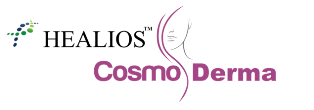What is tacrolimus?
Tacrolimus belongs to a group of drugs called macrolide lactones or calcineurin inhibitors. It has similar immunosuppressant activity to ciclosporin and is given orally or by injection to prevent organ transplantation rejection. Tacrolimus is available as capsules and concentrated injection.
Tacrolimus for skin diseases
Clinical trials have shown tacrolimus (given orally or applied topically) is often an effective treatment for inflammatory skin diseases such as atopic dermatitis and psoriasis.
How does tacrolimus ointment work?
Tacrolimus ointment works on the immune system and directly on skin cells.
- It binds to a receptor within the cell called the FK binding proteins.
- This resulting drug-protein complex inhibits calcineurin (a calcium-dependent phosphatase transmitting chemical) that in turn reduces the activity of T-lymphocytes in the immune system.
- As a consequence, T-cells fail to release their cytokines (these are the chemicals that cause inflammation, redness and itching).
In addition, tacrolimus may also have direct effects on skin cells (keratinocytes). It appears to reduce the number of IL-8 cytokinereceptors on the keratinocyte, hence reducing inflammation.
What is tacrolimus ointment used for?
Tacrolimus ointment is mainly indicated for the treatment of moderate to severe atopic dermatitis in adults and children who are:
- responding poorly to conventional therapy (emollients, topical and oral steroids, antibiotics, phototherapy) and/or
- suffering side effects from conventional therapy.
Children should only be treated with tacrolimus ointment 0.03%. A stronger ointment (0.1%) is also available for adults. Studies have shown that treatment with topical tacrolimus show benefits after about one week and maximum improvement at about 3 months.
There is no cure for atopic dermatitis, but tacrolimus provides a steroid-free treatment for controlling the symptoms. It frequently relieves the itch and inflammation caused by atopic dermatitis.
Topical tacrolimus may also be useful for lichen planus, discoid lupus and many other inflammatory skin diseases.
How to use tacrolimus ointment
Tacrolimus ointment is a prescription medicine and should be used only as directed by your doctor. Initial treatment will be for a short period to assess the response. If it is effective it may be continued long-term (6-12 months) if required. A thin layer of ointment should be rubbed in gently and completely onto the affected area(s) twice daily.
Once the inflamed skin has returned to normal, the ointment may be discontinued. To prevent frequent recurrences, it may be helpful to apply it to previously affected areas two or three times weekly.
Side effects of tacrolimus ointment
Most patients tolerate tacrolimus ointment well. The most common side effect that can be experienced around the site of application is a feeling of warmth or a sensation of burning. This is usually mild to moderate in severity and goes away within a few days after starting treatment. However, if this reaction persists for more than one week you should see your doctor. Other less common side effects include headache, cough, fever, flu-like symptoms, muscle aches, and in treated areas, infection of the hair follicle (folliculitis) and acne.
Unlike topical corticosteroids, topical tacrolimus has not been shown to cause skin thinning, hence it is suitable for application to areas of skin that are thin such as the face, neck and flexures.

 7975288129 / 7483528607
7975288129 / 7483528607
